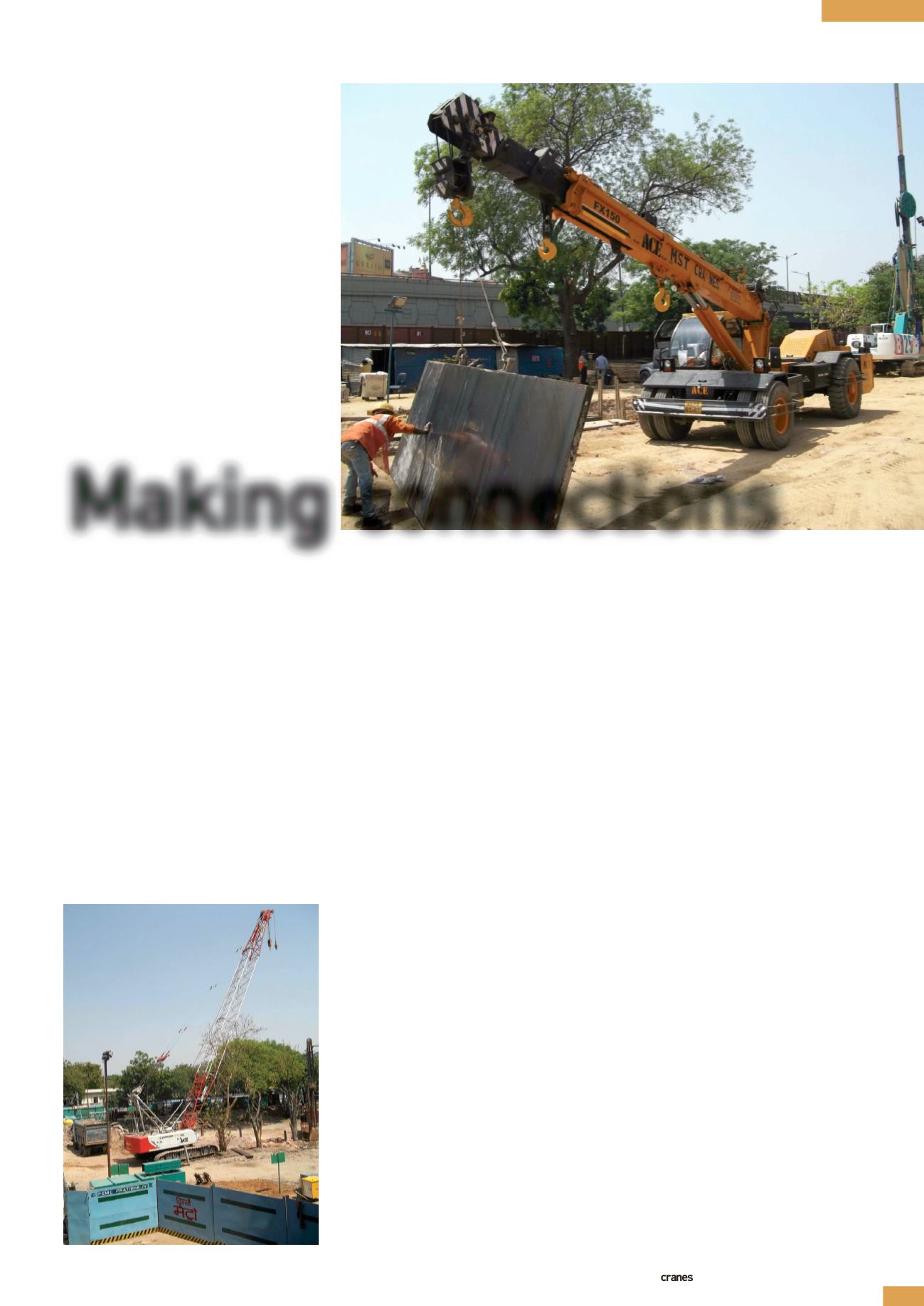
INTERNATIONAL AND SPECIALIZED TRANSPORT
■
OCTOBER 2013
INDIA
49
O
ver the years Delhi has become one
of India’s major commercial and
residential hubs taking its population
to more than 16 million. As a result there
are an increasing amount of vehicles
choking up the road networks.
To ease transportation across the city,
in 1995 Delhi Metro Rail Corporation
(DMRC) was formed with equity
participation from the Union Government
of India and State Government of the
National Capital Territory of Delhi. The
aim was to build and operate a world class
metro. The master plan for Delhi Metro
was for a network of underground, elevated
and street level corridors of more than
400 km. The plan was for the network to be
completed in four phases.
Corporation (HCC) and Samsung
Engineering joint venture, Afcons, ITD-
ITDchem, Pratibha and Femc. Civil
subcontractors are SB Protech.
Bringing benefits
Ever since its commissioning, the metro has
brought immense social and commercial
benefit to Delhi and the National Capital
Regions. With more than 200 train sets
of both four and six coaches, Delhi Metro
carries almost 2 million passengers daily.
According to estimates by Central Road
Research Institute of India and the Central
Government Road Research Institute, up
to 2011 the metro has helped in removing
150,000 vehicles, including cars, buses, two
wheelers and auto rickshaws from the roads
of Delhi. It has also played a major role
in preventing more than 200,000 tonnes
of emissions of harmful gases. It has also
helped in saving at least 660 accidents and
132 fatal accidents. Economic benefits
in terms of emission savings cost and
annual fuel and time costs saved on road
passengers are estimated to be around
INR 4,905 crores (US$ 797 million).
Completion of the third phase by
2016 is expected to further reduce vehicle
population as the metro will carry an
additional 4 million passengers. It will
interlink the residential, commercial and
industrial areas of the capital city along
with its outskirts.
The 140 km link will have seven
corridors that will be built over busy roads
and railway crossings connecting Delhi and
Mumbai, which are both densely populated
Work for Phase 1began in 1998 and
was made operational in 2002. Phase 1 has
a total route length of 65 km with 13 km
underground and 59 stations. The second
phase of the project was completed in 2010.
It extended the system by another 120 km
adding 80 stations. It covered 15 km of
elevated and 5.16 km of underground
track on one stretch, connecting Central
Secretariat and India’s federal parliament
to the outskirts of the city. A further 14 km
of underground and 8 km of elevated track
was added to link the metro with Delhi’s
suburbs known as National Capital Region.
Now work is underway for the third
phase of the project, which will extend
the system by another 140 km. Cost of
construction is INR 35,242 crores
(US$ 5.7 billion). The Japan Bank of
International Cooperation is funding
52.68 % of the total fund requirement
while the Union Government of India and
Government of Delhi are paying 10.64 %
each. Interest free subordinate debt for
central taxes and land is 14.47 %.
The third phase will add 47 km of
underground lines while the remaining
lines will be elevated corridors covering a
total number of 90 stations. The project will
connect arterial roads of Delhi comprising
the Ring Road, outer Ring Road and parts
of Old Delhi. It will also take the metro to
Faridabad and Bahadurgarh, cities in the
neighbouring state of Haryana. Contractors
for the third phase are Indian construction
company Larsen and Toubro and Shanghai
Urban Construction Group (SUCG joint
venture entity), Hindustan Construction
Crawler and wheeled
mobile cranes are working
on the expansion of metro
lines in central New Delhi,
India. PARTHA PRATIM
BASISTHA reports
>
Making connections
An FX150 pick and carry crane
from Indian manufacturer Ace
A Chinese
Zoomlion
QUY70 crawler
crane on site


